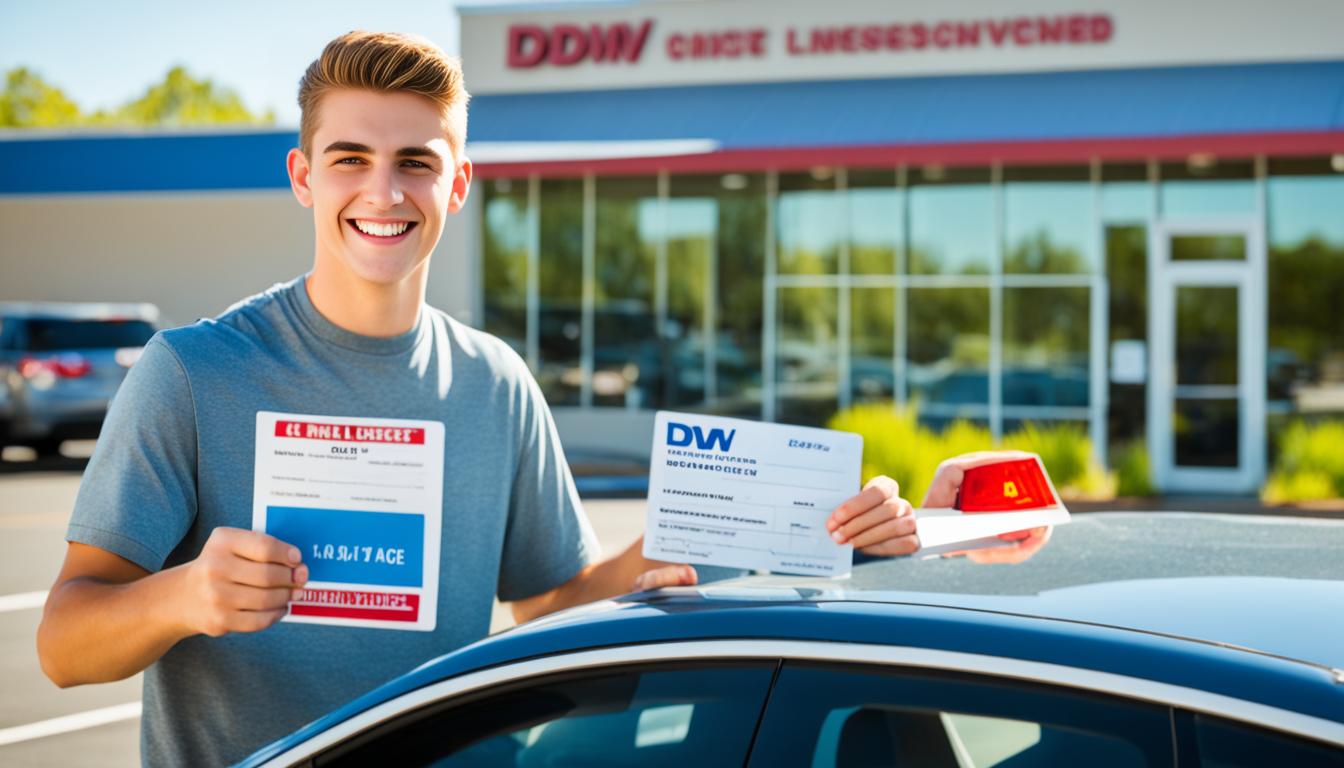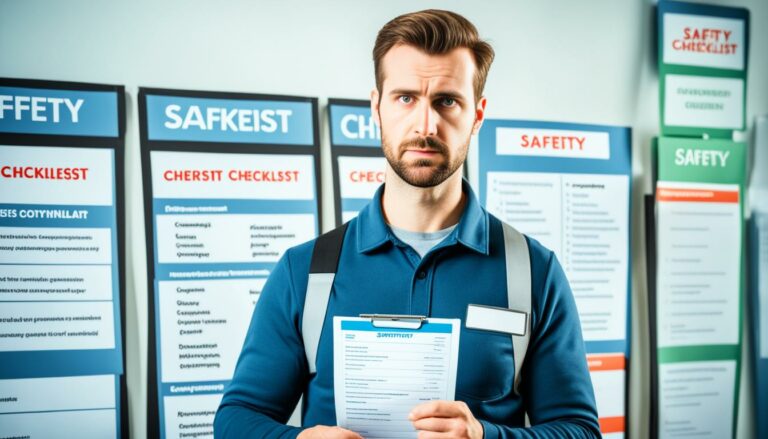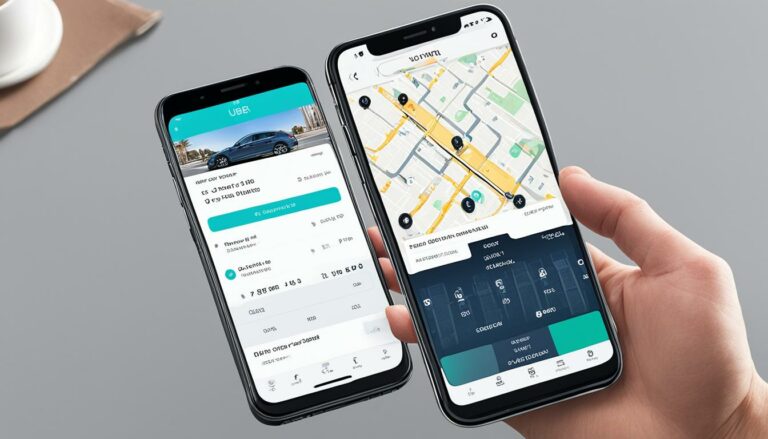Get Your License at 17: A Step-by-Step Guide
Obtaining a driver’s license at 17 is an exciting milestone for teens and their parents. If you’re wondering how to get your license at this age, we’ve got you covered. This step-by-step guide will walk you through the process and requirements, ensuring a smooth journey towards your goal.
Getting your license at 17 starts with driver’s education. Completing a driver’s education course will equip you with essential knowledge about road safety, traffic laws, and accident prevention. Additionally, it is crucial to choose a licensed school and instructor for your driver training, ensuring you receive proper training from a qualified professional.
Once you’ve completed driver’s education and training, you can apply for an instruction permit. This involves filling out the necessary forms, paying the application fee, and passing the vision and knowledge tests. With an instruction permit in hand, you’ll be able to gain supervised driving experience, honing your skills on the road.
Once you turn 16, you can apply for a driver’s license if you have completed driver education, training, and have an instruction permit. The application process includes providing proof of at least 50 hours of supervised driving practice, including 10 hours of night driving. After passing the required driver knowledge and in-car driving tests, you’ll receive a provisional driver’s license.
At 18, you automatically become a fully licensed California driver with no driving restrictions. You can visit the DMV to obtain a duplicate driver’s license without the word “provisional” on it if desired. It’s important to remember that safe driving practices should always be followed, regardless of your license status.
Key Takeaways:
- Complete a driver’s education course to obtain crucial knowledge about road safety and traffic laws.
- Choose a licensed school and instructor for your driver training to ensure proper guidance.
- Apply for an instruction permit, pass the necessary tests, and gain supervised driving practice.
- After turning 16, apply for a driver’s license, provide proof of supervised driving practice, and pass the required tests.
- At 18, you become a fully licensed California driver.
Driver’s Education
The first step in obtaining your driver’s license at 17 is completing a driver’s education course. This course is designed to provide you with the knowledge and skills necessary to become a safe and responsible driver.
In driver’s education, you will learn about essential topics such as road safety, traffic laws, driver responsibilities, and accident prevention. By understanding these crucial aspects, you will develop a solid foundation for your driving journey.
Driver’s education courses can be taken either in-person or online, depending on your preference and availability. It is essential to ensure that the course you choose is offered by a licensed school and taught by a professional instructor.
This comprehensive course will equip you with the necessary information to navigate the roads confidently and responsibly. It will also help you develop good driving habits and instill a sense of respect for traffic laws and road safety.
“Driver’s education is the first step towards becoming a safe and responsible driver. It provides you with the necessary knowledge and skills to navigate the roads confidently.”
– Emily Thompson, Certified Driving Instructor
Completing a driver’s education course is an important requirement on the path to achieving your driver’s license at 17. It lays the groundwork for a lifetime of safe and informed driving, promoting not only your safety but also the safety of others on the road.
Benefits of Driver’s Education
- Acquiring essential knowledge about road safety
- Understanding and abiding by traffic laws
- Developing responsible driving habits
- Learning accident prevention techniques
- Enhancing situational awareness on the road
- Gaining confidence and proficiency as a driver
Driver’s education provides the necessary knowledge and skills to help you become a safe and responsible driver. By taking this course, you are taking a proactive step towards building a strong foundation for your driving journey.
Driver Training
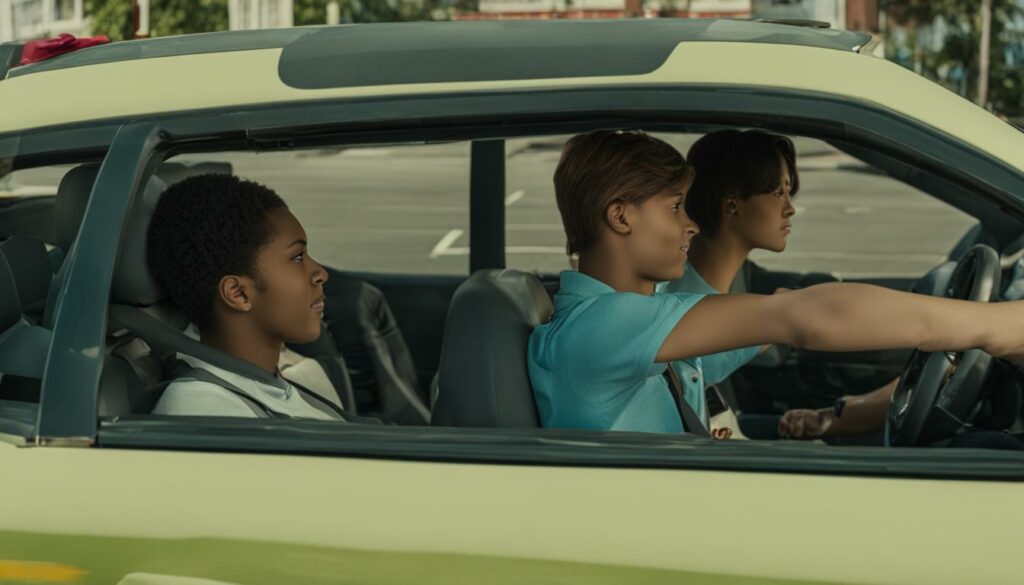
After completing driver’s education, the next crucial step is driver training. This hands-on training provides aspiring drivers with essential behind-the-wheel experience that is necessary for safe and confident driving. Driver training involves a minimum of six hours of practical instruction conducted by a licensed instructor.
It is imperative to choose a licensed school and instructor for driver training to ensure the highest quality of education and adherence to industry standards. The California Department of Motor Vehicles (DMV) maintains a comprehensive database that verifies the license status of driving schools. By selecting a licensed school, you can have peace of mind knowing that your teen is receiving instruction from a qualified professional.
| Benefits of Driver Training |
|---|
| Hands-on experience in real-world driving situations |
| Opportunity to practice and refine driving skills |
| Guidance from a licensed instructor with expert knowledge |
| Enhanced understanding of traffic rules and regulations |
| Preparation for the final driving test |
Driver training plays a vital role in developing good driving habits and building confidence behind the wheel. Through supervised on-road practice, students learn essential skills such as vehicle control, defensive driving techniques, lane changing, and parking maneuvers. Instructor guidance ensures that students receive constructive feedback and tailored instruction to address their specific areas of improvement.
Remember, choosing a licensed school and instructor for driver training is crucial in providing the best possible education and ensuring your teen is equipped with the knowledge and skills to become a safe and responsible driver.
Now that your teen has completed both driver’s education and driver training, they are one step closer to obtaining their driver’s license. The next section will guide you through the process of obtaining an Instruction Permit, a crucial milestone on the path to becoming a licensed driver.
Instruction Permit
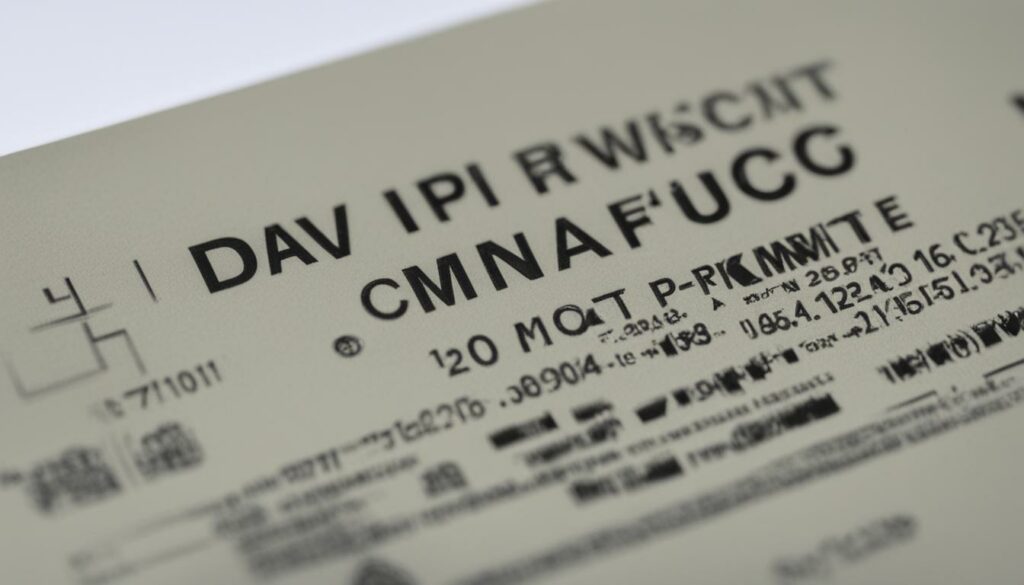
Teen drivers over the age of 15 1/2 can apply for an instruction permit after completing driver education and enrolling in a driver training program. The application process involves completing the necessary forms, paying the application fee, and having fingerprints scanned. Additionally, teens must pass a vision test and a knowledge test.
Once the application is submitted and the tests are successfully completed, teens will be issued an instruction permit. This permit allows teen drivers to practice driving under certain conditions and restrictions. It is an important step towards obtaining a full driver’s license.
With the instruction permit, teen drivers must adhere to specific regulations. Some of these restrictions include:
- Not driving between the hours of 11:00 p.m. and 5:00 a.m. unless accompanied by a licensed driver over the age of 25
- Not having passengers under the age of 20 unless accompanied by a licensed driver over the age of 25
These restrictions are in place to ensure the safety of teen drivers, as well as other road users. It allows new drivers to gain experience and confidence behind the wheel while minimizing the risk of accidents and distractions.
Obtaining an instruction permit is an exciting step towards the independence of driving. It provides teen drivers with the opportunity to apply their knowledge and skills in a controlled environment, preparing them for the responsibilities of the road ahead.
Why is the knowledge test important?
The knowledge test is a vital component of obtaining an instruction permit. It assesses a teen driver’s understanding of traffic laws, road signs, and safe driving practices. By passing the knowledge test, individuals demonstrate their readiness to begin practicing driving with the supervision of a licensed adult.
Passing the knowledge test shows that teen drivers have the necessary knowledge to navigate and follow the rules of the road. It ensures that they are aware of the potential hazards and how to respond appropriately in different driving situations.
The knowledge test may cover topics such as:
- Traffic signs and signals
- Right-of-way rules
- Safe driving practices
- Driving in adverse conditions
Studying the driver’s education materials, taking online practice tests, and reviewing the California Driver Handbook will greatly help in preparing for the knowledge test. It is essential to have a solid understanding of these concepts before taking the test to ensure success and safety on the road.
Applying for a Driver’s License
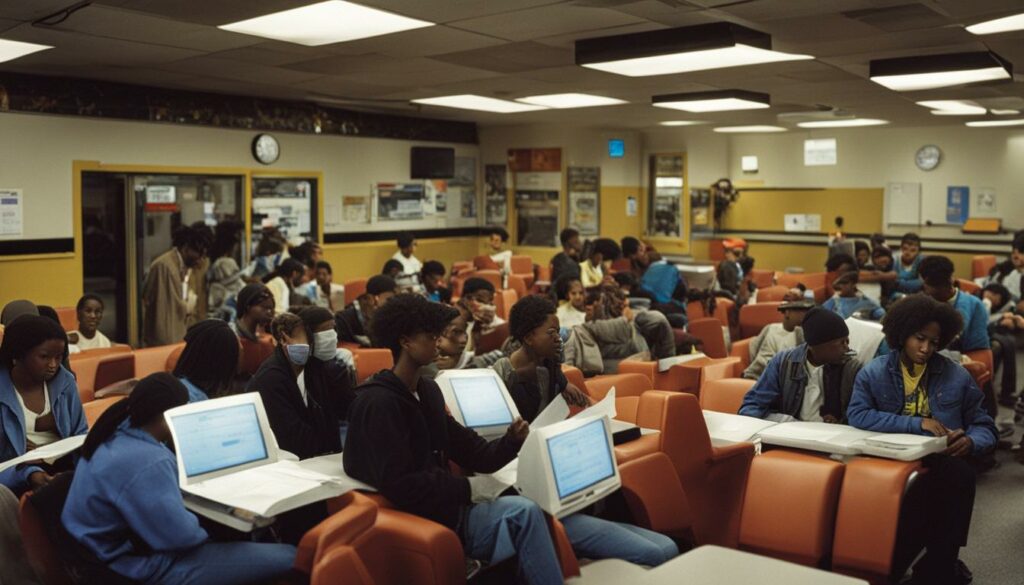
Once teens turn 16, they can apply for a driver’s license if they have completed driver education, training, and have an instruction permit. The application process requires proof of completion of at least 50 hours of supervised driving practice, including 10 hours of night driving. California provides a parent-teen driver training guide that offers valuable information on road safety and state laws. Teens must schedule and pass the required driver knowledge and in-car driving tests at the Department of Motor Vehicles.
To apply for a driver’s license at 16 years old, teens must go through a thorough process that ensures they are prepared to handle the responsibilities of being behind the wheel. This process includes:
- Completion of driver education: This involves successfully completing a driver education course that covers essential topics such as traffic laws, road signs, and safe driving practices. The course can be taken online or in-person, but it must be approved by the California DMV.
- Driver training: After completing driver education, teens must undergo driver training, which includes a minimum of six hours of behind-the-wheel practice with a licensed instructor. This training helps new drivers gain practical experience and further develop their driving skills.
- Supervised driving practice: Alongside driver training, teens must also complete at least 50 hours of supervised driving practice, including 10 hours of nighttime driving. This practice allows young drivers to become familiar with different road conditions and gain confidence on the road.
- Knowledge and in-car driving tests: Before obtaining a driver’s license, teens must pass both a knowledge test and an in-car driving test. These tests assess their understanding of traffic laws, driving techniques, and their ability to safely operate a vehicle. Scheduling and taking these tests can be done at the local Department of Motor Vehicles (DMV) office.
By following these steps and successfully completing the necessary requirements, teens can apply for their driver’s license at 16 years old. It’s important to note that the application process may vary slightly depending on the state, so it’s always recommended to check the specific requirements of your state’s DMV.
Tips for Applying for a Driver’s License
Here are some helpful tips to keep in mind when applying for a driver’s license at 16 years old:
- Study and prepare: Take the time to thoroughly review the driver’s manual and any study materials provided during driver education. Understanding traffic laws, road signs, and safe driving practices will help you pass the knowledge test with confidence.
- Practice, practice, practice: Dedicate enough time to practice driving under different conditions, such as daytime and nighttime driving, urban and rural areas, and various weather conditions. The more experience you gain, the more comfortable you’ll become behind the wheel.
- Stay calm and focused during the tests: The driver knowledge and in-car driving tests can be nerve-wracking, but it’s essential to stay calm and focused. Follow the instructions carefully, demonstrate your understanding of the rules of the road, and drive defensively during the in-car test.
- Bring the necessary documents: When visiting the DMV to apply for your driver’s license, make sure to bring all the required documents, such as proof of completion of driver education and training, proof of identity, and proof of residency. Check your state’s DMV website for a comprehensive list of the documents you need to bring.
Remember, obtaining a driver’s license is a privilege that comes with great responsibility. Adhering to traffic laws, practicing safe driving habits, and staying focused on the road are essential for your safety and the safety of others on the road.
Becoming a Licensed California Driver
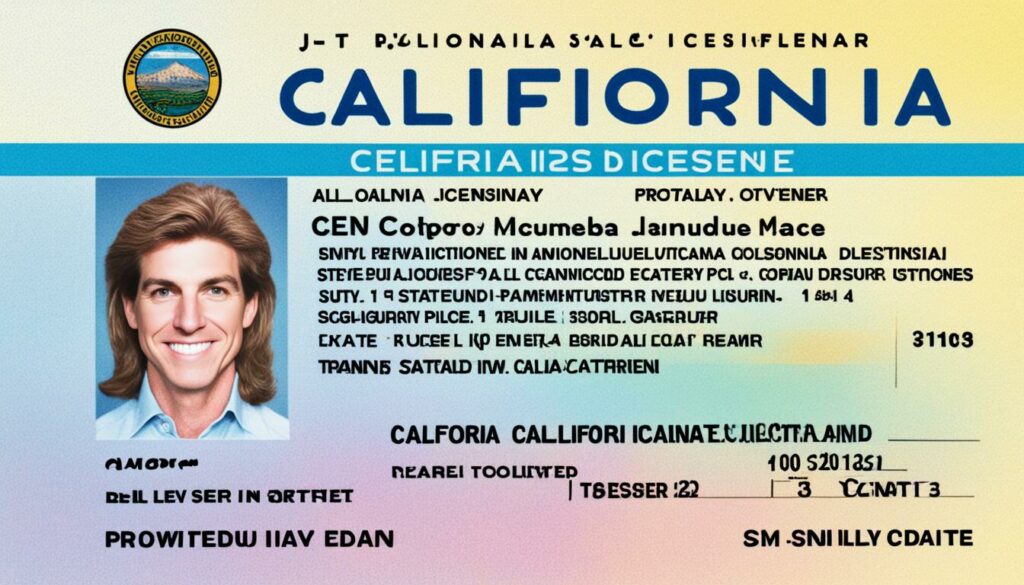
Once teens have completed their driver education and training, the next step towards obtaining a driver’s license is the completion of the required driver knowledge and in-car driving skills tests. These tests assess the teen’s understanding of road rules, safety regulations, and their ability to apply them effectively while driving.
To successfully pass the tests, teens should thoroughly study the California Driver Handbook and practice their driving skills to ensure they are prepared for both the written knowledge test and the practical driving test. The written knowledge test covers topics such as traffic laws, road signs, and safe driving practices.
After passing both the written and driving tests, teens will receive a provisional driver’s license. This license allows them to drive independently, but with certain restrictions in place to ensure their safety and the safety of others on the road.
One notable driving restriction for teens with a provisional driver’s license in California is the limitation on driving between the hours of 11:00 p.m. and 5:00 a.m. During this time frame, teen drivers must have a licensed driver over the age of 25 present in the vehicle. Additionally, teen drivers with a provisional license are not allowed to transport passengers under the age of 20, unless accompanied by a licensed driver over the age of 25.
These restrictions are in place to reduce the risk of accidents during high-risk periods and discourage distractions that may arise from having passengers of similar age in the vehicle. It’s important for teens to adhere to these restrictions and continue practicing safe driving habits throughout the provisional license period.
Key Restrictions for Teen Drivers with a Provisional License:
- No driving between 11:00 p.m. and 5:00 a.m.
- No passengers under the age of 20, unless accompanied by a licensed driver over the age of 25.
| Driving Restrictions | Duration |
|---|---|
| No driving between 11:00 p.m. and 5:00 a.m. | Typically 12 months |
| No passengers under the age of 20, unless accompanied by a licensed driver over the age of 25. | Typically 12 months |
During the provisional license period, teens should continue to enhance their driving skills, practice defensive driving techniques, and abide by all traffic laws. With time and experience, they can develop the necessary skills and knowledge to become safe and responsible drivers.
No License Restrictions
Turning 18 is an exciting milestone for teens, as it marks the transition to becoming a fully licensed California driver. Once teens reach this age, they automatically become fully licensed drivers and no longer have any driving restrictions imposed on them.
At the age of 18, teens have the freedom to visit the Department of Motor Vehicles (DMV) and obtain a duplicate driver’s license without the word “provisional” on it. This duplicate license serves as an official document to confirm their status as fully licensed drivers.
It’s important to note that even after obtaining a full license, safe driving practices should always be upheld. Adhering to traffic laws, following speed limits, avoiding distractions, and staying alert are crucial for maintaining road safety for oneself and others.
Sharing the Road with Motorcycles, Bicycles, and Scooters
When driving, it’s crucial to share the road safely with motorcycles, bicycles, and scooters. These vulnerable road users require extra caution and attention from all drivers to ensure their safety. Here are some important road safety guidelines to keep in mind:
- Always check for approaching motorcycles, bicycles, and scooters, as they can be difficult to see due to their smaller size.
- Be aware of your surroundings and constantly scan for these vehicles, especially when making turns or changing lanes.
- Leave plenty of space when passing motorcycles, bicycles, and scooters to provide them with enough room to maneuver.
- Be mindful of their potential speed, as motorcycles and scooters can accelerate quickly, and bicycles may be traveling at a slower pace.
- Do not drive in designated bicycle lanes or areas specifically marked for motorcycles and scooters.
- Use your turn signals consistently to indicate your intentions, giving these road users time to react.
- Check for bicycles and scooters before opening car doors to prevent accidents known as “dooring.”
By following these road safety guidelines, you can help create a safer environment for everyone on the road.
| Motorcycles | Bicycles | Scooters | |
|---|---|---|---|
| Special Considerations | Motorcycles can change lanes quickly and may be harder to see due to their smaller profile. | Bicycles often travel at a slower speed and may need more time to react to your movements. | Scooters are smaller and can accelerate rapidly, so be cautious when sharing the road with them. |
| Safe Passing Distance | A minimum of 3 feet is recommended when passing motorcycles. | Leave at least 3 feet of space when passing bicycles. | Provide a safe distance of 3 feet or more when overtaking scooters. |
| Visibility | Be aware of blind spots and always double-check before changing lanes. | Keep a lookout for bicycles, especially when making right turns. | Watch for scooters, especially when they approach intersections. |
Driving Tips for Various Road Conditions
When it comes to driving, it’s essential to be prepared for different road conditions. From extreme heat to extreme cold, windy conditions, and slippery roads, adapting your driving approach can help keep you safe on the road. Here are some driving tips to consider for each situation:
Extreme Heat
Driving in extreme heat requires extra caution and attention. Follow these tips to stay safe:
- Check your vehicle’s cooling system to ensure it’s in proper working condition.
- Keep yourself hydrated and bring water with you for longer trips.
- Use sunshades or window visors to block out direct sunlight and reduce the temperature inside the car.
- Plan your trips during cooler parts of the day, if possible.
Extreme Cold
Driving in extreme cold conditions can present unique challenges. Here’s how you can navigate icy roads safely:
- Ensure your car’s tires have sufficient tread and are suitable for winter driving conditions.
- Keep your gas tank at least half full to prevent fuel line freezing.
- Drive at a slow, controlled speed to maintain traction on icy or snowy roads.
- Give yourself extra time to stop and avoid sudden acceleration or braking.
Windy Conditions
Strong winds can impact your vehicle’s stability and control. Use these driving tips when facing windy conditions:
- Keep both hands on the steering wheel for better control.
- Reduce your speed to maintain control of your vehicle.
- Be cautious when passing large vehicles, as they can create wind gusts that may affect your vehicle.
- Keep a safe distance from other vehicles, especially high-profile vehicles like trucks and buses, which are more susceptible to wind-related accidents.
Slippery Roads
Driving on slippery roads requires extra caution to prevent skidding or loss of control. Follow these tips to stay safe:
- Reduce your speed and increase your following distance to allow for more time to stop.
- Accelerate and decelerate slowly to maintain traction on slippery surfaces.
- Avoid sudden braking or turning, as it can lead to skidding.
- Ensure your vehicle’s tires are in good condition and properly inflated.
Remember, adapting your driving techniques to different road conditions is crucial for your safety and the safety of others on the road. Always exercise caution, follow road signs, and maintain a calm and focused mindset while driving.
| Condition | Driving Tips |
|---|---|
| Extreme Heat | Check cooling system, stay hydrated, plan trips during cooler parts of the day |
| Extreme Cold | Ensure winter tires, keep gas tank at least half full, drive at a slow speed, give extra time to stop |
| Windy Conditions | Keep both hands on the steering wheel, reduce speed, be cautious when passing large vehicles, maintain a safe distance |
| Slippery Roads | Reduce speed, increase following distance, accelerate and decelerate slowly, ensure tires are in good condition |
Conclusion
Obtaining a driver’s license at 17 is a significant milestone that brings newfound independence and opportunities. However, it is important to remember that with this privilege comes great responsibility. By following the step-by-step guide outlined in this article and embracing safe driving habits, teens can smoothly navigate the process and enjoy the freedom of driving at 17 years old.
Throughout the journey of obtaining a driver’s license at 17, it is essential to prioritize road safety. This means obeying traffic laws, being aware of the surroundings, and practicing defensive driving techniques. Remember that defensive driving saves lives and reduces the risk of accidents.
Additionally, it is crucial to continuously educate oneself about road safety and stay updated with any changes in local traffic regulations. By proactively seeking out resources, attending defensive driving courses, and staying informed, teens can consistently improve their driving skills and contribute to a safer road environment.
In conclusion, getting a driver’s license at 17 is an exciting milestone, but it should always be accompanied by a commitment to safety and responsible driving. By cultivating good driving habits from an early age and embracing a mindset of continuous improvement, young drivers can enjoy the freedom and opportunities that come with having a driver’s license while ensuring their own safety and the safety of others on the road.
FAQ
What is the first step in getting a driver’s license at 17?
The first step is completing a driver’s education course.
What does driver’s education cover?
Driver’s education covers important topics such as road safety, traffic laws, and accident prevention.
Can driver’s education be taken online?
Yes, driver’s education can be taken either in-person or online, as long as it is offered by a licensed school and taught by a professional instructor.
What is the next step after driver’s education?
The next step is driver training, which involves at least six hours of behind-the-wheel training with a licensed instructor.
Should I choose a licensed school and instructor for driver training?
Yes, it’s important to choose a licensed school and instructor for driver training to ensure proper training from a qualified professional.
Can I apply for an instruction permit at 17?
Yes, teens over the age of 15 1/2 can apply for an instruction permit after completing driver education and enrolling in a driver training program.
What are the restrictions for instruction permit holders?
Instruction permit holders are not allowed to drive between 11:00 p.m. and 5:00 a.m. and cannot have passengers under the age of 20 unless accompanied by a licensed driver over the age of 25.
Can I apply for a driver’s license at 16?
No, you can only apply for a driver’s license once you turn 16 and have completed driver education, training, and obtained an instruction permit.
How many hours of supervised driving practice do I need to complete?
You need to complete at least 50 hours of supervised driving practice, including 10 hours of night driving.
What tests do I need to pass to get a driver’s license?
Teens need to pass the driver knowledge and in-car driving tests at the Department of Motor Vehicles.
Are there driving restrictions for provisional driver’s license holders?
Yes, provisional driver’s license holders have restrictions such as not driving between 11:00 p.m. and 5:00 a.m. and not having passengers under the age of 20 unless accompanied by a licensed driver over the age of 25.
When do the driving restrictions for provisional driver’s license holders end?
The restrictions typically apply for 12 months, after which teens become fully licensed California drivers.
What happens when I turn 18?
When you turn 18, you automatically become a fully licensed California driver and can visit the DMV to obtain a duplicate driver’s license without the word “provisional” on it.
Should I practice safe driving even after I obtain a full license?
Yes, safe driving practices should always be followed, regardless of whether you have a provisional or a full license.
How should I share the road with motorcycles, bicycles, and scooters?
Always check for approaching vehicles, as they can be difficult to see due to their size. Be aware of your surroundings and follow road safety guidelines.
What should I consider when driving in extreme weather conditions?
Adjust speed, use appropriate headlights, maintain distance, and be prepared for unexpected hazards when driving in extreme heat, extreme cold, windy conditions, or slippery roads.
What should I keep in mind when getting my driver’s license at 17?
Follow the step-by-step guide outlined in this article, adhere to road safety guidelines, and prioritize safety on the road.
Source Links
- https://www.idrivesafely.com/defensive-driving/trending/everything-you-need-know-about-getting-your-california-drivers-license-teen
- https://www.dmv.ca.gov/portal/driver-education-and-safety/educational-materials/fast-facts/provisional-licensing-ffdl-19/
- https://www.dmv.ca.gov/portal/driver-education-and-safety/special-interest-driver-guides/teen-drivers/

